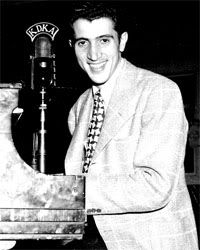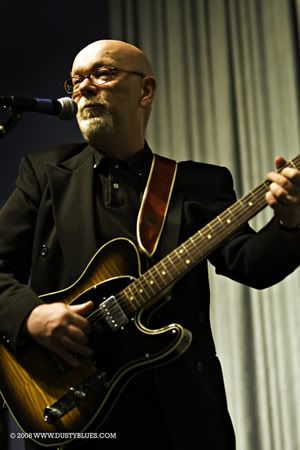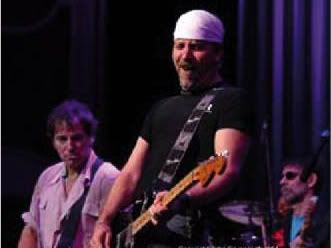
Johnny Costa
Johnny Costa is another in a long string of Pittsburgh musicians who decided that the road wasn't the life and came home to play. It may have put his light under a basket nationally, but make no mistake - Costa was one of the top jazz pianists of this era, even though he eschewed modern fusion-style jazz forms and stuck to the standards, playing the music of Berlin, Gershwin, Kern, mercer, Porter, and Rogers & Hart.
Born in 1922 in Arnold, an Allegheny River town 20 miles northeast of Pittsburgh, Costa never roamed far from his birthplace.
Costa's dad was an immigrant coal miner, and he wanted his kids to lead a life that kept their hands clean and back straight. At age five, Costa began playing the violin. When he was ten, his neighbor Fred Petri taught Costa to play the accordion.
Costa's father actually sold his house so he could buy his son a $500 accordion. Costa credited that early training with developing his skills with the right hand.
But when he reached high school, his music teacher, Frank Oliver, suggested that Costa dump the squeeze box and switch to the piano. The idea made sense to Costa, and after he heard some Art Tatum recordings, he was sold.
He taught himself to play Tatum's songs (in fact, Tatum himself would one day dub Costa "The White Tatum"), and his first teacher, Martin Meissler, came to Arnold a couple of times a week to coach him. And Meissler knew his stuff; he was Oscar Levant's piano teacher, too. Costa's left hand soon caught up to his right.
Costa joined the New York City-based clarinetist and bandleader Tommy Reynolds and his orchestra after graduating from high school. He returned to Pittsburgh soon after the bombing of Pearl Harbor to marry his sweetheart Helen before leaving for the Army.
He was a corpsman in the "Tough Hombre" 90th Division, and took part in the brutal Utah Beach assault on D-Day. Within a few months, rheumatic fever sent him to a series of military hospitals for a year.
Discharged from the army, Costa auditioned for admission to the music department at Carnegie Institute of Technology, now Carnegie-Mellon University. He played Antonín Dvořák's "Humoresque" ala Tatum before a school panel. A music committee member reportedly said afterward "That was not 'Humoresque,' Mr. Costa, but what you played was wonderful. Of course, we'll accept you."
At Carnegie Tech, he studied music composition under Nicolai Lopatnicoff, a composer of the central European avant-garde style. Costa's personal influences were classical composers, particularly Bach, Beethoven and Chopin, and straight-ahead jazzmen Tatum and Fats Waller. The mash-up created Costa's great and unique style.
He earned two bachelor's degrees at CMU, in music composition and music education. Costa's been quoted as saying he needed the sheepskins "in case I was a flop as a professional musician." Fat chance of that happening, but better safe than sorry.
On the day he graduated in 1951, Costa began a sixteen year stint as musical director of KDKA-TV in Pittsburgh. He played the organ for "Meet Your Neighbor." On Josey Carey's "Funsville," he created the memorable character of Indian Mary, who wore a straw hat with two braids hanging out and a huge feather in back, chewed on a cigar, played the piano, and never said a word. Costa also starred on his own show, "The Wonderful World of Johnny Costa," where he spotlighted a composer and played his songs.
During the fifties, in addition to his TV duties, the Johnny Costa Trio with Jim DeJulio (bass) and Chuck Spatafore (drums), rode the MCA circuit, playing in Chicago, Detroit, Miami and New York several times a year. Costa was on Steve Allen's "Tonight Show."
The busy pianist also recorded for NYC labels Coral and Savoy. "Johnny Costa Plays Piano Solos" (1955), "Johnny Costa Plays for the Most Beautiful Girl in the World" (1955), "Costa Living" (1955), "A Gallery of Gershwin" (1958) and "In My Own Quiet Way" (1959) were released by Coral; "Introducing Johnny Costa" (1955) and "The Amazing Johnny Costa" (1955) (reissued on CD as "Neighborhood" in 1989) were on Savoy. Sadly, they're all out of print.
But recording and touring weren't Costa's bag. Before the decade of the fifties closed, he quit a brief stint in Philadelphia as the musical director of Mike Douglas' weekday show and returned to Pittsburgh for keeps. Costa was tired of living out of a suitcase, and he and Helen had two kids, Debbie and John Junior, to raise. He gave up chasing the brass ring to sink his roots deep into home turf.
He gigged regularly at Mercur’s, a downtown club which had featured jazz players like Erroll Garner, at the William Penn hotel, and he still had his KDKA duties. But his KD days were soon to end when he found a new TV challenge in 1967.
That's when "Mr. Rogers' Neighborhood" first aired. Costa became the show's musical director. His music opened and closed the program, he arranged the music, accompanied guests, and added background melodies during the show's segments.
Costa met Fred Rogers five years before the show was a thought through Josey Carey. When Rogers began planning "Mr. Rogers' Neighborhood," he offered Costa $5,000 to arrange, conduct, and play the music for 100 episodes. Costa accepted the job in a heartbeat. At the time, he needed exactly that amount to pay his son's college tuition. God works in mysterious ways.
Who knew that it would end up the most successful children's show ever broadcast, and that Costa would be introducing generations of kids to jazz improvisations? There were no kiddie ditties played on MRN; neither Rogers nor Costa would condescend to their audience, young as it may have been, that much.
None of the music was canned, Rogers allowed him complete freedom, and Costa, along with "Handyman" Joe Negri, created a playlist that led Branford Marsalis to say "Mister Rogers' Neighborhood is the best jazz show on the air anywhere."
Costa and Rogers collaborated frequently on the show's music, with Costa harmonizing and arranging Rogers’ melodies. It's well known that Fred Rogers had degrees in psychology and theology, but maybe not so well known that he also had a degree in music composition.
In the seventies, Costa recorded on a string of LPs released by Rogers featuring Pittsburgh jazzmen like Negri, Bobby Boswell and other contributors.
The first, in fact, was released in 1967, when The Johnny Costa Trio (now with Carl McVicker on bass and Bob Rawsthorne doing percussion, both who performed with him on MRN) on Mister Rogers’ Neighborhood Records with tunes like “Won’t You Be My Neighbor?” Like his other LPs, it's no longer available.
It was a match made in heaven. Rogers got first class musicians, while Costa (and Negri) got steady work, a regular paycheck, and some notoriety to allow them to maintain a club and concert schedule of their chosing.
He was appreciated by his hometown boys for his outside work, too. The City Theater honored Costa as the first recipient of its Performance Award, presented to an outstanding performing artist from western Pennsylvania. The presentation featured performances by Dick Hyman and Peter Nero. Costa was also elected to the Hall of Fame of the Pittsburgh Jazz Society.
Oh, about his discography. Dick Hyman, jazz pianist, keyboardist, composer and Costa admirer, contacted Hank O'Neal, president of Chiaroscuro Records (which had recorded Mary Lou Williams and Earl Hines), and sent him an unlabeled cassette of Costa recordings in 1990.
O'Neal signed Costa after a brief listen, and released four recordings: "Classic Costa" (1992 - American songbook tunes), "Flying Fingers" (1992 - jazz standards), "A Portrait of George Gershwin" (1994 - Gershwin), and "Dream" (1996 - Johnny Mercer).
Heck, even his liner notes are classics. They were written by folk like Elsie and Henry Hillman and Henry Mancini. Along with L&M Records 1997 release of "Christmas Reflections," these LPs are all that's left of Costa's musical legacy.
Johnny Costa died of anemia at the age of 74 on October 11th, 1996.
His personal legacy is that of a regular joe. Costa lived within a few miles of his family home, and used to meet his high school music teacher for breakfast. He never had an agent; Costa just gave out his phone number - unchanged for 30 years - and booked his own gigs. His kids lived nearby. A beautiful musician and beautiful person is how his friends and family describe him. And they're right.


